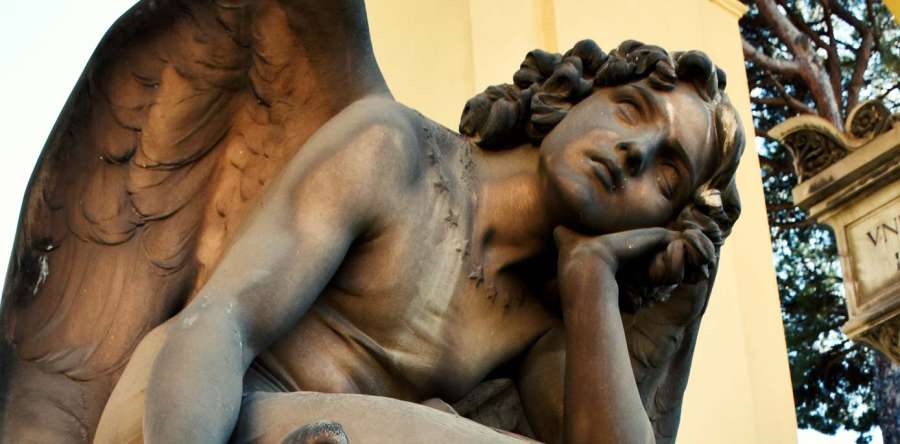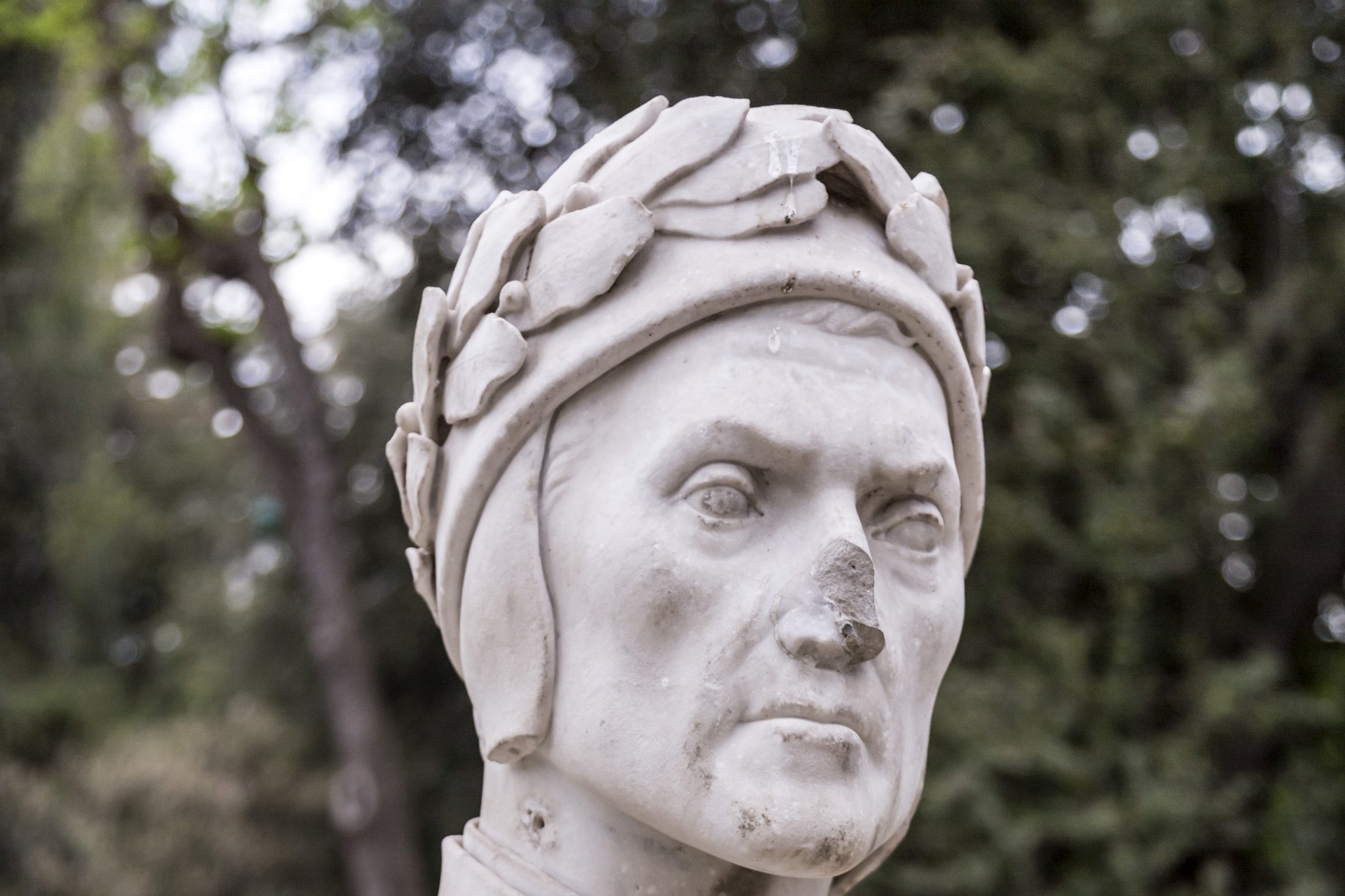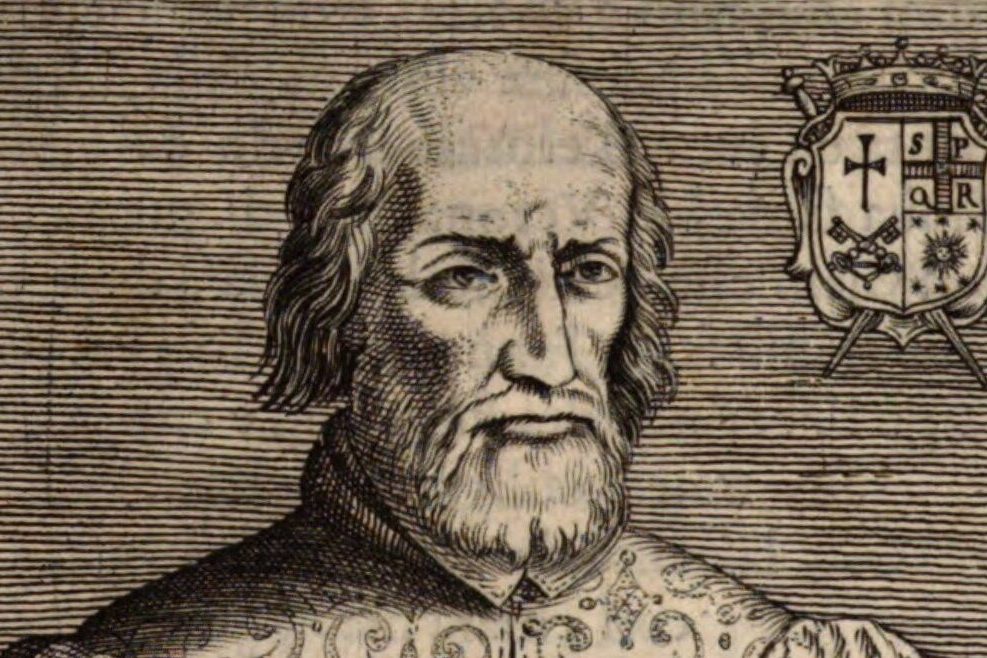When Juno, Queen of Olympus, needed to vent her spleen, she visited Aeolus, god of the winds, on his draughty island off Sicily. Juno was outraged that the fugitive Trojan prince Aeneas was destined to found Rome and destroy Carthage, her favorite city, so Aeolus ordered a cyclone to capsize the Trojan fleet. Ever since, Rome has feared southern winds.
If you visit St. Peter’s Square, you will see them marked on a wind compass surrounding the Vatican Obelisk. Before the Papal States were blown away, Pius IX noted their names and directions. The ostro, the warm and humid south wind, brings summer storms and flash floods. The libeccio, the southwest wind from Libya, raises high seas and causes squalls. But the most malevolent is the scirocco, the southeast desert wind, a withering blast whose hot and clammy touch hastens death and putrefaction.
The scirocco begins in North Africa, roaring in from the Sahara like a goum of wild Bedouins, its burnouse laden with sand. Sharper than a scimitar, it pierces the lungs and shreds the bronchial tubes of consumptives and asthmatics. Algerians and Tunisians barricade doors and windows, stop chimneys and keyholes, and cower in back parlors until the dust storm passes.
Crossing the Mediterranean, the red desert sand mixes with moisture, and the wind becomes the First Plague of Egypt. It rains blood in Palermo and Naples. Horrified by the stained monuments and polluted fountains, the superstitious cross themselves, and the old faint. As the wind travels further north, however, it turns more insidious. Scientists cannot explain why, but by the time it reaches Rome, it is a cloud of nuclear fallout: invisible, pervasive, and toxic.
Residents know it is blowing even before they open their eyes and glance out the window. Everyone, from the Pope to a pushcart vendor, wakes up with a dull headache. By 8:00 AM., the air is sultry and low, grey clouds fill the sky. A leaden pall hangs over Rome. Nerves fray. Eyes cannot focus. Skin turns to burlap. Lungs gasp. Throats clog. For three days, the damp liver-spots walls and ceilings and makes mildew blossom everywhere. The grit penetrates bank vaults and scratches machinery. Finally, a cleansing rain dissolves the evil wind and leaves the city’s cars with reddish-yellow pockmarks.
The ordeal debilitates and oppresses native Romans, whose history feeds collective anxiety. The scirocco of October 1867 brought cholera and madness. Horses panicked, bolted from carriages, and trampled pedestrians to death. Visitors, however, are immune, particularly in winter. “I don’t find this sort of weather disagreeable,” Goethe records in his diary on November 7, 1786. “It is warm all the time, which it never is on rainy days in Germany.”
George Augustus Sala, the British journalist, would open his casements and let the scirocco fan his cheeks and ventilate his apartment. He likened the wind to “warm milk in a volatilized state.” Staying in Rome two weeks before Christmas in 1866 and knowing that London was choked with fog and drenched by Fleet Street must, he found the “balmy” southeaster “inexpressibly grateful and refreshing.”
These imperturbable Anglo Saxons will never understand. Like radiation poisoning, sensitivity to the scirocco is cumulative. The south wind blows 200 days a year in Rome. Over decades, it saps resistance, increases lassitude, and stokes misanthropy, as certain tropical climates, which seem perfectly tolerable at first, drive colonialists to commit atrocities.
When the scirocco hits, it blows the lid off Pandora’s box. Office workers and sales assistants mope and sulk. Café patrons get dejected or quarrelsome. Waiters scowl and snap. Teachers humiliate students. Doctors mock patients. Suicide rate and traffic accidents spike. If domestic violence occurs, a court may consider the weather an extenuating circumstance, provided the judge has not brained the bailiff with a gavel. The human heart is a whirligig. The worst thing a critic can say about a new book is: “é scritto in tempo di scirocco.” It was written during the scirocco, which makes it a giddy mess.
The Temple of the Tempestates, the Wind gods, once stood on the Appian Way. Lucius Cornelius Scipio built it in 259 BC to fulfill a vow. Caught in a storm with his fleet off Corsica, Scipio prayed to the gods for deliverance. Romans still appease the winds. A small anemometer whirls on Bernini’s colonnade in St. Peter’s Square. Meteorology is always truer than morality. Mere mortals are seldom better than the weather.
Pasquino’s secretary is Anthony Di Renzo, professor of writing at Ithaca College. You may reach him at direnzo@ithaca.edu.
Quando Giunone, Regina dell’Olimpo, ebbe bisogno di sfogare il suo malumore, fece visita a Eolo, dio dei venti, sulla sua isola ventosa al largo della Sicilia. Giunone era indignata dal fatto che il fuggitivo principe troiano Enea fosse destinato a fondare Roma e a distruggere Cartagine, la sua amata città, così Eolo ordinò a un ciclone di rovesciare la flotta troiana. Da allora, Roma teme i venti del sud.
Se visitate Piazza San Pietro, li vedrete segnati su una rosa dei venti che circonda l’Obelisco del Vaticano. Prima che lo Stato Pontificio fosse spazzato via, Pio IX segnò i loro nomi e le loro direzioni. L’Ostro, il caldo e umido vento del Sud, porta tempeste estive e inondazioni improvvise. Il Libeccio, il vento sudoccidentale proveniente dalla Libia, solleva onde e provoca raffiche. Ma il più malevolo è lo Scirocco, il vento del Sud-est del deserto, un’esplosione feroce il cui tocco caldo e umido accelera la morte e la putrefazione.
Lo Scirocco inizia in Nord Africa, ruggendo dal Sahara come il Goum dei selvaggi beduini, con il suo fardello carico di sabbia. Più tagliente di una scimitarra, trapassa i polmoni e fa a pezzi i bronchi dei tubercolotici e degli asmatici. Algerini e tunisini barricano porte e finestre, chiudono camini e serrature e si accucciano nei salotti posteriori fino a quando non passa la tempesta di polvere.
Attraversando il Mediterraneo, la sabbia rossa del deserto si mescola con l’umidità e il vento diventa la prima piaga d’Egitto. Piove sangue a Palermo e Napoli. Spaventati per i monumenti macchiati e le fontane inquinate, i superstiziosi si fanno il segno della croce e gli anziani svengono. Mentre il vento viaggia più a nord, tuttavia, diventa più insidioso. Gli scienziati non possono spiegare il perché, ma quando raggiunge Roma, è una nuvola di ricaduta nucleare: invisibile, pervasiva e tossica.
I residenti sanno che soffia ancora prima che aprano gli occhi e guardino fuori dalla finestra. Tutti, dal Papa al venditore ambulante, si svegliano con un mal di testa sordo. Alle 8:00, l’aria è afosa e bassa, le nuvole grigie riempiono il cielo. Un tappeto di piombo incombe su Roma. I nervi si sfilacciano. Gli occhi non possono mettere a fuoco. La pelle si trasforma in juta. I polmoni rantolano. La gola s’intasa. Per tre giorni, l’umidità macchia pareti e soffitti e fa fiorire ovunque la muffa. La polvere penetra nei caveau delle banche e graffia le macchine. Alla fine, una pioggia purificatrice dissolve il vento malvagio e lascia le auto della città con chiazze giallo-rossastre.
L’ordalia debilita e opprime i residenti romani, la cui storia alimenta l’ansia collettiva. Lo Scirocco dell’ottobre 1867 portò colera e follia. I cavalli furono presi dal panico, si liberarono dalle carrozze e calpestarono a morte i pedoni. I visitatori, tuttavia, sono immuni, soprattutto in inverno. “Io non trovo questo tipo di clima sgradevole” registra Goethe nel suo diario, il 7 novembre 1786. “E’ caldo per tutto il tempo, cosa che non avviene mai nei giorni di pioggia in Germania”.
George Augustus Sala, il giornalista britannico, apriva le sue finestre e lasciava che lo Scirocco trovasse le sue guance e ventilasse il suo appartamento. Ha paragonato il vento a “latte caldo in uno stato volatilizzato”. Stando a Roma due settimane prima di Natale nel 1866, sapendo che Londra era soffocata dalla nebbia e inzuppata dalla fretta di Fleet Street, aveva trovato il “balsamico” vento da Sudest “indicibilmente piacevole e rinfrescante”.
Questi imperturbabili anglosassoni non capiranno mai. Come l’avvelenamento da radiazioni, la sensibilità allo Scirocco è cumulativa. Il vento del Sud soffia 200 giorni all’anno a Roma. Nel corso dei decenni, indebolisce la resistenza, aumenta la spossatezza e alimenta la misantropia, come alcuni climi tropicali, che sembrano perfettamente tollerabili in un primo momento, e portano i colonialisti a commettere atrocità.
Quando lo Scirocco colpisce, fa saltare il coperchio del vaso di Pandora. Gli impiegati e gli addetti alle vendite si preoccupano e mettono il broncio. I clienti del caffè si sentono abbattuti o litigiosi. I camerieri ti guardano in malo modo e ti aggrediscono verbalmente. Gli insegnanti umiliano gli studenti. I medici deridono i pazienti. Aumentano i suicidi e c’è un picco di incidenti stradali. Se si verifica una violenza domestica, un tribunale può considerare il clima una circostanza attenuante, a condizione che il giudice non abbia colpito in testa l’ufficiale giudiziario con il martelletto. Il cuore umano è una trottola. La cosa peggiore che un critico possa dire di un nuovo libro è: “E’ scritto in tempo di Scirocco”, che lo rende una caotica confusione.
Il Tempio dei Tempestati, gli dei del Vento, una volta si ergevano sulla Via Appia. Lucio Cornelio Scipione lo costruì nel 259 a.C. per adempiere a un voto. Sorpreso da una tempesta insieme alla sua flotta al largo della Corsica, Scipione pregò gli dei per sopravvivere. I Romani placano ancora i venti. Un piccolo anemometro gira sul colonnato del Bernini in Piazza San Pietro. La meteorologia è sempre più vera della moralità. I semplici mortali sono raramente migliori del tempo.
Il segretario di Pasquino è Anthony Di Renzo, professore di scrittura all’Ithaca College. Puoi raggiungerlo all’indirizzo direnzo@ithaca.edu.































